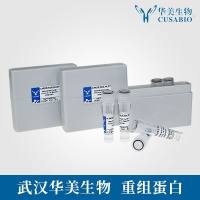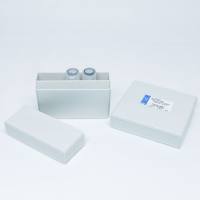Chromosome Conformation Capture Carbon Copy Technology
互联网
- Abstract
- Table of Contents
- Materials
- Figures
- Literature Cited
Abstract
Chromosome conformation capture (3C) is used to quantify physical DNA contacts in vivo at high resolution. 3C was first used in yeast to map the spatial chromatin organization of chromosome III, and in higher eukaryotes to demonstrate that genomic DNA elements regulate target genes by physically interacting with them. 3C has been widely adopted for small?scale analysis of functional chromatin interactions along (cis ) or between (trans ) chromosomes. For larger?scale applications, chromosome conformation capture carbon copy (5C) combines 3C with ligation?mediated amplification (LMA) to simultaneously quantify hundreds of thousands of physical DNA contacts by microarray or ultra?high?throughput DNA sequencing. 5C allows the mapping of extensive networks of physical interactions among large sets of genomic elements throughout the genome. Such networks can provide important biological insights, e.g., by identifying relationships between regulatory elements and their target genes. This unit describes 5C for large?scale analysis of cis ? and trans ?chromatin interactions in mammalian cells. Curr. Protoc. Mol. Biol. 80:21.14.1?21.14.13. © 2007 by John Wiley & Sons, Inc.
Keywords: chromatin structure; epigenetic regulation; genomics; systems/network biology; DNA looping; transcription; high throughput
Table of Contents
- Introduction
- Strategic Planning
- Basic Protocol 1: Generation of 5C Libraries from Cells and Control BAC DNA
- Basic Protocol 2: Quality Control of 5C Libraries by Nested PCR
- Reagents and Solutions
- Commentary
- Literature Cited
- Figures
Materials
Basic Protocol 1: Generation of 5C Libraries from Cells and Control BAC DNA
Materials
Basic Protocol 2: Quality Control of 5C Libraries by Nested PCR
Materials
|
Figures
-
Figure 21.14.1 Diagram of 3C (left) and 5C (right) methods. 3C generates a library of ligation products each of which reflects a physical interaction between the corresponding loci in the cell. 5C employs ligation‐mediated amplification to detect specific ligation products in the 3C library. 5C is performed at high levels of multiplexing with thousands of 5C primers to detect millions of ligation products. 5C products can be quantified by microarray analysis or high‐throughput sequencing. View Image -
Figure 21.14.2 Design of 5C primers. Top: Forward and reverse primers are composed of specific parts that recognize the ends of specific restriction fragments, and universal tails that are used for PCR amplification of the 5C library. Middle: Forward and reverse primers anneal to opposite strands along the genome, but they will anneal to the same strand and directly across the restriction site of head‐to‐head ligation products in the 3C library. Bottom: Universal primers that recognize the tails of 5C primers are used to amplify the entire 5C library. Nested primers that recognize individual 5C primers are used to amplify and quantify specific 5C products. View Image -
Figure 21.14.3 Example of a 5C titration. 5C was performed with increasing amounts of 3C control library and the resulting 5C products were amplified with universal primers. 5C products were analyzed by agarose gel electrophoresis (top) and a titration curve was generated from the quantitated band signals (bottom). No 5C ligation products were observed when either 3C template or Taq ligase was left out. Increasing amounts of 3C library yield increasing amounts of 5C products, indicating that 5C quantitatively detects 3C ligation products. When performing 5C, it is best to use an amount of 3C template that falls within the linear range of 5C product formation. View Image -
Figure 21.14.4 A theoretical 5C experiment to detect long‐range interactions between a set of three promoters and all surrounding chromatin segments. Top: Reverse 5C primers are designed for the three promoters and forward 5C primers for all other chromatin segments throughout the region of interest. All 5C primers are pooled and used for a single 5C analysis to quantify all interactions between the three promoters and all surrounding segments in parallel. Middle: Theoretical outcome of the 5C experiment. Interaction frequencies are generally inversely related to the genomic distance between the corresponding chromatin segments. Bottom: Local peaks in interaction frequencies indicate specific long‐range interactions. View Image
Videos
Literature Cited
| Literature Cited | |
| Dekker, J. 2003. A closer look at long‐range chromosomal interactions. Trends Biochem. Sci. 28:277‐280. | |
| Dekker, J. 2006. The 3 C's of chromosome conformation capture: Controls, controls, controls. Nat. Methods 3:17‐21. | |
| Dekker, J. 2007. GC‐ and AT‐rich chromatin domains differ in conformation and histone modification status and are differentially modulated by Rpd3p. Genome Biol. 8:R116. | |
| Dekker, J., Rippe, K., Dekker, M., and Kleckner, N. 2002. Capturing chromosome conformation. Science 295:1306‐1311. | |
| Dostie, J. and Dekker, J. 2007. Mapping networks of physical interactions between genomic elements using 5C technology. Nat. Protoc. 2:988‐1002. | |
| Dostie, J., Richmond, T.A., Arnaout, R.A., Selzer, R.R., Lee, W.L., Honan, T.A., Rubio, E.H., Krumm, A., Lamb, J., Nusbaum, C., Green, R.D., and Dekker, J. 2006. Chromosome conformation capture carbon copy (5C): A massively parallel solution for mapping interactions between genomic elements. Genome Res. 16:1299‐1309. | |
| Gheldof, N., Tabuchi, T.M., and Dekker, J. 2006. The active FMR1 promoter is associated with a large domain of altered chromatin conformation with embedded local histone modifications. Proc. Natl. Acad. Sci. U.S.A. 103:12463‐12468. | |
| Landegren, U., Kaiser, R., Sanders, J., and Hood, L. 1988. A ligase‐mediated gene detection technique. Science 241:1077‐1080. | |
| Ling, J.Q., Li, T., Hu, J.F., Vu, T.H., Chen, H.L., Qiu, X.W., Cherry, A.M., and Hoffman, A.R. 2006. CTCF mediates interchromosomal colocalization between Igf2/H19 and Wsb1/Nf1. Science 312:269‐272. | |
| Liu, Z. and Garrard, W.T. 2005. Long‐range interactions between three transcriptional enhancers, active Vkappa gene promoters, and a 3′ boundary sequence spanning 46 kilobases. Mol. Cell. Biol. 25:3220‐3231. | |
| Lomvardas, S., Barnea, G., Pisapia, D.J., Mendelsohn, M., Kirkland, J., and Axel, R. 2006. Interchromosomal interactions and olfactory receptor choice. Cell 126:403‐413. | |
| Murrell, A., Heeson, S., and Reik, W. 2004. Interaction between differentially methylated regions partitions the imprinted genes Igf2 and H19 into parent‐specific chromatin loops. Nat. Genet. 36:889‐893. | |
| Spilianakis, C.G. and Flavell, R.A. 2004. Long‐range intrachromosomal interactions in the T helper type 2 cytokine locus. Nat. Immunol. 5:1017‐1027. | |
| Spilianakis, C.G., Lalioti, M.D., Town, T. Lee, G.R. and Flavell, R.A. 2005. Interchromosomal associations between alternatively expressed loci. Nature 435:637‐645. | |
| Splinter, E., Grosveld, F., and de Laat, W. 2004. 3C technology: Analyzing the spatial organization of genomic loci in vivo. Methods Enzymol. 375:493‐507. | |
| Tolhuis, B., Palstra, R.J., Splinter, E., Grosveld, F., and de Laat, W. 2002. Looping and interaction between hypersensitive sites in the active beta‐globin locus. Mol. Cell 10:1453‐1465. | |
| Vakoc, C., Letting, D.L., Gheldof, N., Sawado, T., Bender, M.A., Groudine, M., Weiss, M.J., Dekker, J., and Blobel, G.A. 2005. Proximity among distant regulatory elements at the beta‐globin locus requires GATA‐1 and FOG‐1. Mol. Cell 17:453‐462. |





